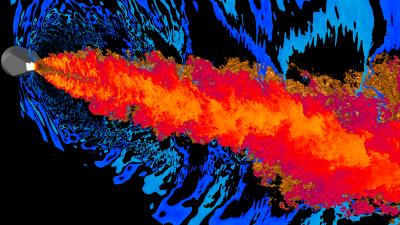Stanford has grabbed the supercomputer crown with Sequoia, a million-core computer at the Lawrence Livermore National Laboratories that is being used to simulate jet turbulence in real time. This isn’t the fastest supercomputer per se, but it is the first to use one million cores simultaneously which is an amazing feat for big iron.
A Cray Titan at Oak Ridge National Laboratory holds the record the fastest computer with half a million processors. However, this machine can use more of its processors at once, allowing Stanford Engineering’s Center for Turbulence Research to “solve a complex fluid dynamics problem—the prediction of noise generated by a supersonic jet engine.”
Research associate Joseph Nichols, who works with the machine, noted that Sequoia is number two on the list of the world’s most powerful computers but that the computer has the most computational cores. “It uniquely enables us to run 1M+ core simulations, to glimpse what the future has in store,” he said.
“The computer allows us to test the scalability of our algorithms to large numbers of cores – if a code is scalable, the time-to-solution will keep dropping as greater numbers of cores added to the machine,” said Nichols. “The scalability that we observed was amazing – and it means that our codes may scale even to greater numbers of processors in the future.”
The computer has been used to simulate jet engine noise as well as air turbulence over jet wings and modelling scramjet engines.
“These runs represent at least an order-of-magnitude increase in computational power over the largest simulations performed at the Center for Turbulence Research previously,” said Nichols “The implications for predictive science are mind-boggling.”
